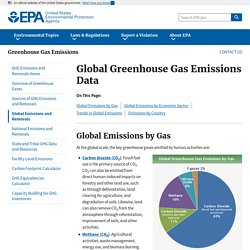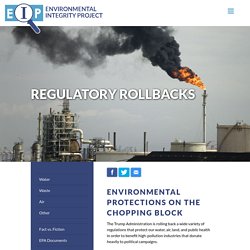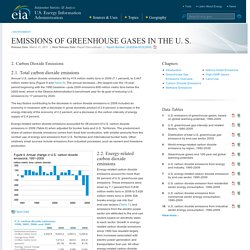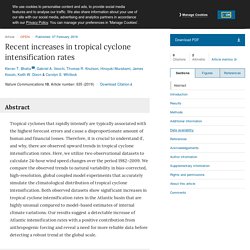

8/12/19: 'Coal is over' -US miners rooting for the Green New Deal. 6/25/19: “It’s just become daily news”: 6 Florida newsrooms are teaming up to cover climate change. In Florida, climate change is a local news story.

The state’s 21 million residents are already feeling the effects of a heating planet, including not just higher temperatures but more and stronger hurricanes, toxic algae, sunny-day flooding, and sea level rise. And climate change will cost Florida more than any other state — an estimated $76 billion by 2040. 2/20/19: Docs detail multimillion$ ties involving official at EPA & secretive industry group. The nation’s biggest coal-burning power companies paid a top lobbying firm millions of dollars to fight a wide range of Obama-era environmental rules, documents obtained by POLITICO reveal — shortly before one of the firm’s partners became President Donald Trump’s top air pollution regulator.

Now that ex-partner, Bill Wehrum, is aggressively working to undo many of those same regulations at the EPA, where he is an assistant administrator in charge of issues including climate change, smog and power plants’ mercury pollution. Story Continued Below. 9/11/20: Firefighters struggling to contain wildfires in California, Oregon & Washington. 12/1/19: Global heating driving spread of mosquito-borne dengue fever. Rising temperatures across Asia and the Americas have contributed to multiple severe outbreaks of dengue fever globally over the past six months, making 2019 the worst year on record for the disease.

In 1970 only nine countries faced severe dengue outbreaks. But the disease, which is spread by mosquitoes that can only survive in warm temperatures, is now seen in more than 100 countries. There are thought to be 390 million infections each year. Thais Dos Santos, an expert adviser on the surveillance and control of arboviral diseases for the Pan American Health Organization, said dengue was reaching new areas as temperatures rise. Excessive Wealth Disorder Hurts the Environment- J. Patterson. Global Greenhouse Gas Emissions Data. On This Page: Global Emissions by Gas At the global scale, the key greenhouse gases emitted by human activities are: Carbon dioxide (CO2): Fossil fuel use is the primary source of CO2.

7/19/19: Short Primer on 'Corn Sweat' & Summer Humidity. As hot, sticky weather descends on much of the country this weekend, some of the stickiness in Midwestern cities may be due to an unexpected phenomenon: “corn sweat.”

That’s right. The Uninhabitable Earth: David Wallace-Wells on the horrors of climate change. “It is, I promise, worse than you think.” That was was the first line of David Wallace-Wells’s horrifying 2017 essay in New York magazine about climate change. It was an attempt to paint a very real picture of our not-too-distant future, a future filled with famines, political chaos, economic collapse, fierce resource competition, and a sun that “cooks us.”
Climate Change Impacts by State. Time to Wake Up: Climate Denial (Sen. Sheldon Whitehouse (April 2018) Environmental Integrity. Environmental Protections on the Chopping Block The Trump Administration is rolling back a wide variety of regulations that protect our water, air, land, and public health in order to benefit high-pollution industries that donate heavily to political campaigns.

Although the numbers show that environmental regulations on the whole are good for the economy and have benefits that far exceed costs by preventing illness and death from dangerous pollution, Trump’s war on environmental protections has been relentless. The administration has targeted almost 80 environmental rules, including those meant to control greenhouse gases, coal ash waste, water pollution, mercury, and smog.
3/31/11: EIA - Greenhouse Gas Emissions - Carbon Dioxide Emissions. 2.1.

Total carbon dioxide emissions Annual U.S. carbon dioxide emissions fell by 419 million metric tons in 2009 (7.1 percent), to 5,447 million metric tons (Figure 9 and Table 6). The annual decrease—the largest over the 19-year period beginning with the 1990 baseline—puts 2009 emissions 608 million metric tons below the 2005 level, which is the Obama Administration's benchmark year for its goal of reducing U.S. emissions by 17 percent by 2020. The key factors contributing to the decrease in carbon dioxide emissions in 2009 included an economy in recession with a decrease in gross domestic product of 2.6 percent, a decrease in the energy intensity of the economy of 2.2 percent, and a decrease in the carbon intensity of energy supply of 2.4 percent.
Energy-related carbon dioxide emissions accounted for 98 percent of U.S. carbon dioxide emissions in 2009 (Table 6) when adjusted for bunker fuels and U.S. 2/7/19: Recent increases in tropical cyclone intensification rates. Observational trends Thus far, TC intensification trend analysis has exclusively focused on International Best-Track Archive for Climate Stewardship17 (IBTrACS) data (Methods), which likely adds systematic biases to published results.

Recap of the 2018 Hurricane Season, Plus a Look at 2019 - StormGeo - Freedom to Perform. As the six-month Atlantic Hurricane Season comes to an end this week (the official last day is November 30th), we’ve asked our hurricane experts to take a look back at the accuracy of pre-season forecasts, as well as indications for the 2019 season.

Most tropical activity occurs in late August and early September, when a combination of factors, such as warm ocean waters and favorable atmospheric conditions, nurture low-pressure systems that strengthen to become tropical storms. This was certainly the case in 2018. From Hurricane Florence, which formed on August 28, to Tropical Depression Eleven, which formed on September 18, this was the most active period of the Atlantic season with six tropical systems in a three weeks. Though the Atlantic season officially ends on November 30th, meteorologically it ended several weeks ago. The last named storm in the Atlantic, Hurricane Oscar, dissipated on October 31 without causing any major impacts.
Notable Atlantic Storms Notable Pacific Storms. Made From Recycled Materials. 4 black women leaders on climate, justice, and the green Promised Land. Black leaders have long been pioneers in protecting communities and the environment — from Harriet Tubman, who in the mid-1800s used her knowledge of the natural world to guide escaped slaves north, to landfill protesters in Warren County, North Carolina in 1982 who galvanized the modern environmental justice movement.

Yet despite these contributions to the larger green movement, black activists and scholars are not always given their due.
United States Environmental Protection Agency. EPA Archives. Environmental Integrity Project. National Resource Defense Council –NRDC. Carbon Costs. Fauna. Flora. Getting to Know You: Andrew Wheeler. Getting to Know You: Scott Pruitt. The Green New Deal. San Andreas Fault. Science. Environmental activism of Al Gore. Childhood[edit] 5/10/16: Invisible Radar Wall in the Atmosphere Caused by UV from the Sun.